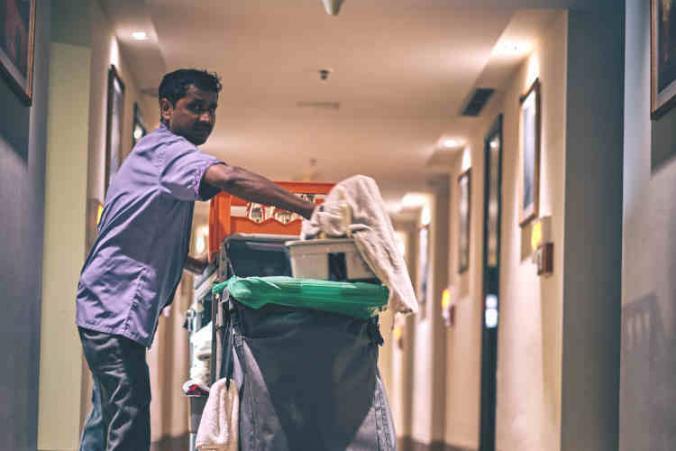There are many work environments where employees and contractors work alone. Unfortunately, these professions and workplace settings have higher risk of work injury or assault.
Working alone: What is Isolated Worker?
The Department of Labor and Industries (L&I) defines “Isolated Workers” as janitors, security guards, hotel housekeepers, and room service attendants who spend most working hours alone. Usually, employees in this line of work do not have a coworker present throughout their day. Sadly, studies show that these workers suffer from significantly high rates of work injury, sexual assault and harassment.
The Washington State Legislature enacted RCW 49.60.515 to address this issue. The entire purpose of this law is to protect those that work alone. Furthermore, it’s important to note that L&I oversees the implementation of this law.
Safety measures to protect employees that work alone
To protect these workers, L&I requires employers to take certain safety precautions. In detail, these safety measures include:
- Having a sexual harassment policy;
- Implementing mandatory training for supervisors and employees to prevent sexual harassment;
- Educating workers about employee protections;
- Providing resources to report harassment or assault incidents; and
- Providing panic buttons to certain workers
Specifically, panic buttons must be available to janitors, security guards, hospitality housekeepers and room service attendants. These types of workers spend most of their day working alone. Therefore, they deserve special focus and protection.
Worker protection for certain employees and contractors
Property service contractors employ workers that provide commercial janitorial services for a third party. Hence, in addition to the other safety requirements, these employers must report certain information to L&I. Here, some of the reporting includes:
- The date they adopted a sexual harassment policy;
- The number of managers, supervisors and employees trained on sexual harassment policy;
- Physical location address for where their employees provide janitorial services; and
- The number of employees in each location and number of hours worked.
L&I resources for employees and employers
L&I has a “My L&I” portal for easy reporting. On top, employers can access an easy step-by-step guide on the L&I website for reporting. Furthermore, L&I is hosting a series of upcoming webinars to help employers understand the requirements. L&I specialists will host these webinars on June 15th, July 14th, Aug 25th, and Sep 15th, 2021.
In summary, studies show higher risk of workplace injury, harassment and sexual assault for those that work alone. To help, the Washington State Legislature enacted laws to protect these workers. Explicitly, these protections include harassment policy, training mandates, panic buttons, and certain reporting requirements. However, even with these protections in place, workers must always remain aware of their surroundings.

Leave a Reply